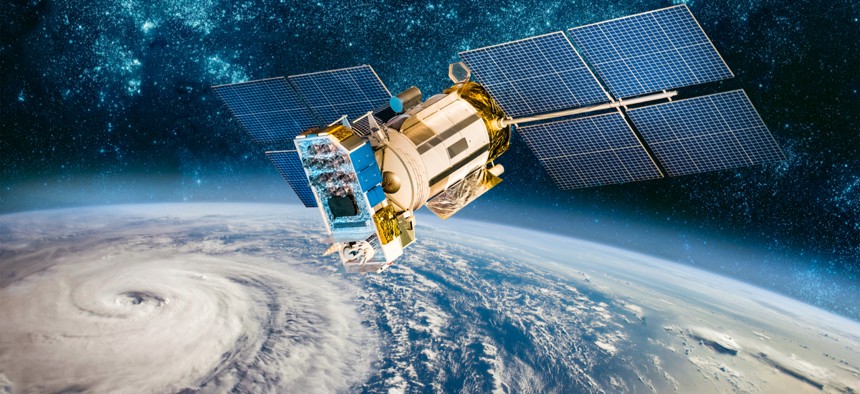NOAA Aligns Cloud and Data Strategies With Administration Priorities

Andrey Armyagov/Shutterstock
The new strategies meld with three existing science and technology-focused documents, as well as incorporating priorities from the White House’s cloud and data policies.
One of the world’s biggest data producers and an agency that is into cloud in every definition of the word, the National Oceanic and Atmospheric Administration released new strategies that will govern how the agency uses data and cloud computing going forward.
On Tuesday, NOAA officials announced the release of its Data Strategy and Cloud Strategy, two parts of the agency’s broader science and technology strategy.
NOAA is hardly a stranger to big data—the agency collects some 20 terabytes of data per day just from its satellites—or cloud computing. For example, the Big Data Project is working with large commercial cloud providers to increase access to the agency’s environmental data through mutually beneficial partnerships.
“Aligning NOAA’s capabilities with the constantly evolving needs of our stakeholders requires both collaboration and partnerships to deliver data and services in a way that stakeholders expect to consume them,” acting NOAA Administrator Neil Jacobs said Tuesday in a statement. “Creative partnerships with commercial cloud providers set NOAA apart from others in making more of its data publicly accessible.”
The Data Strategy includes five goals, each with its own set of objectives:
- Align data management leadership roles across the organization.
- Govern and manage data strategically to most effectively steward the U.S. taxpayers’ investment.
- Share data as openly and widely as possible to promote maximum utilization of NOAA data.
- Promote data innovation and quality improvements to facilitate science and support data-driven decision making.
- Engage stakeholders and leverage partnerships to maximize the value of NOAA data to the nation.
Specific objectives under these goals include empowering the agency’s chief data officer, establishing a data governance board and developing plans to release data openly and securely. All of these tie directly into the administration’s Federal Data Strategy, which includes a 2020 Action Plan requiring agencies to begin work on many of these objectives.
“The value of NOAA’s data depends on its quality, integrity, and the ability of users to access and use the data with modern, emerging, and innovative cloud-based services,” Jacobs said. “Our Cloud and Data strategies provide a guide to address emerging science and technology, and ultimately help accelerate NOAA’s mission and further increase the value of our data.”
The Cloud Strategy is similarly set up with five overarching goals, each with its own objectives:
- Enable innovation through rapid adoption of cloud-based services.
- Drive smart migration to the cloud.
- Ensure secure and broad access to cloud services.
- Provide effective governance for cloud shared services.
- Empower a cloud-ready workforce.
All of this rolls up into one explicit vision for the agency:
In the desired future state all NOAA IT services are hosted in a cloud, based on a deliberate decision process, which first considers application hosting in a brokered, multi-vendor, multi-cloud, multi-tenant FedRAMP certified commercial cloud computing environment, and chooses the migration target—multi-tenant, hybrid, private off-premise, etc.—based on cost-effectively meeting all mission requirements, including security, latency, workload variability, and the like.
As with the Data Strategy, the cloud-focused document mirrors the administration’s priorities, reflected in the Cloud Smart policy.
“It is clear that the demand for accessible and user-friendly cloud services and modeling is growing,” said Kelvin Droegemeier, director of the White House Office of Science and Technology. “With this update, NOAA will modernize how users are able to access and use data. We look forward to the discoveries and applications that will ultimately come from the implementation of these strategies.”
The two new strategies join and interconnect with three existing technology strategies published by the agency: the Unmanned Systems Strategy, Artificial Intelligence Strategy and ‘Omics Strategy, which deals with biological sciences using the -omics suffix, such as genomics.
NOAA officials said a sixth plan is forthcoming: the agency’s Citizen Science Strategy.
“Collectively, they will accelerate the implementation of the most effective science and technology applications to advance NOAA’s mission, including protecting life and property and growing the American Blue Economy,” the agency said Tuesday.
NEXT STORY: OSTP: Changes needed to better share COVID data






